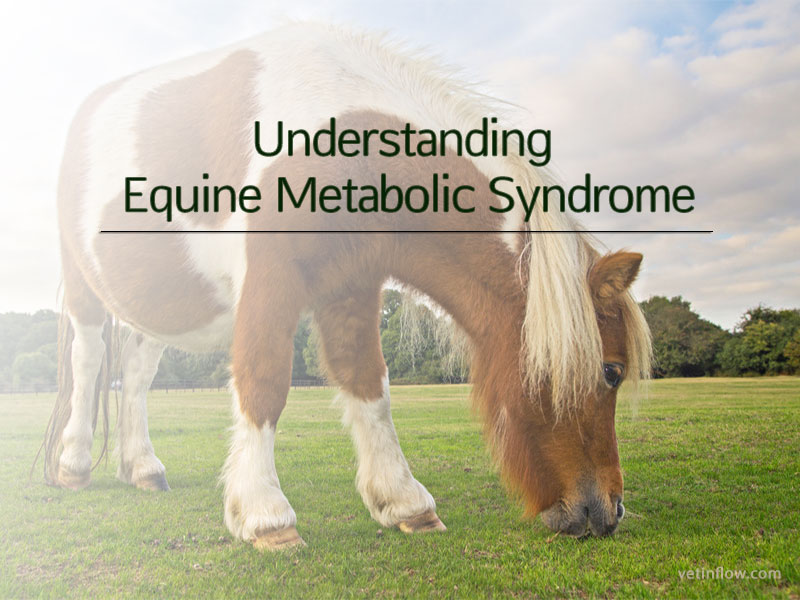
Understanding Equine Metabolic Syndrome

Equine Metabolic Syndrome (EMS) is a complex hormonal disorder that has been recently identified and is still under study. This syndrome involves:
- insulin resistance,
- laminitis and
- obesity.
Insulin regulates how the cells of the body use the sugar that is obtained through diet. This sugar (glucose) will be absorbed and go into the bloodstream. Insulin is a hormone that will basically tell the many cells and tissues of the body when and how to use that sugar. Cells can immediately use glucose for energy or they can store it as fat to be used later. This means that insulin regulates the body's blood sugar levels.
The primary cause of EMS is insulin resistance and the harmful effects caused by the excess of insulin in the bloodstream. When a horse has EMS his cells do not respond to insulin as they should, glucose cannot be processed or stored and will remain in the bloodstream. The body will respond to this increased value of glucose by increasing the production of insulin. This condition is very similar to type II diabetes in humans.
Unfortunately high levels of insulin in the bloodstream have been associated with blood vessel narrowing, blood vessel damage and activation of inflammatory processes which are likely the reason why EMS causes laminitis in horses.
This lack of response to insulin can be due to a genetic predisposition or an acquired condition due to obesity. Obesity is a major predisposing factor for EMS. We now know that fat is not just an inactive lump of cells ready to be used as energy. These cells produce hormones and some of these hormones will down-regulate the sensitivity of tissues to insulin. Large fat deposits will have a down-regulatory action that will be too much for the tissues and these may develop insulin resistance.
Although EMS has been observed in all breeds and types of horses, native pony breeds seem to be more susceptible.
Clinical signs shown by horses with EMS are laminitis, abnormal regional fat deposits (above the eyes, in the neck and crest, around the shoulders and at the base of the tail), lethargy, excessive drinking and urination. Horses with EMS seem to gain weight on very low food intake and have great difficulty losing weight.
If you think your horse or pony has any of the clinical signs described in the previous paragraph, please call your vet as soon as possible. It will really make a difference to your horse or pony's life!
Would you like to know more about horses? Check our Equine Courses:
Equine courses
Read the previous article: Tick season has arrived! Protect your furry friend!

